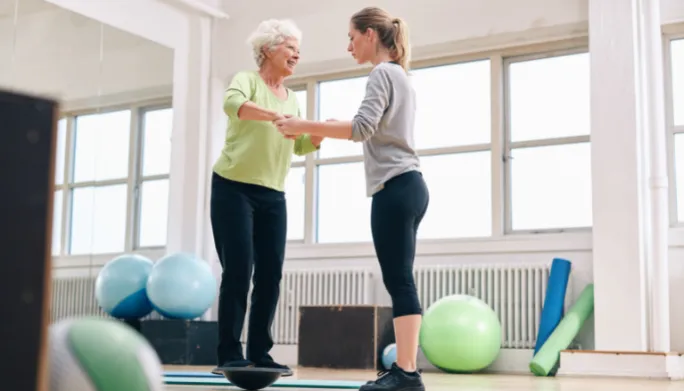Vestibular Therapy

Evidence has shown that vestibular rehabilitation can be effective in improving symptoms related to many vestibular (inner ear/balance) disorders. People with vestibular disorders often experience problems with vertigo, dizziness, visual disturbance, and imbalance. These are the problems that rehabilitation aims to address. Other problems can also arise that are secondary to vestibular disorders, such as nausea and vomiting, reduced ability to focus or concentrate, and fatigue.
Symptoms due to vestibular disorders can diminish the quality of life and impact all aspects of daily living. They also contribute to emotional problems such as anxiety and depression. Additionally, one of the consequences of having a vestibular disorder is that symptoms frequently cause people to adopt a sedentary lifestyle in order to avoid bringing on, or worsening, dizziness and imbalance. As a result, decreased muscle strength and flexibility, increased joint stiffness, and reduced stamina can occur.
Treatment strategies used in rehabilitation can also be beneficial for these secondary problems.
WHAT IS VESTIBULAR REHABILITATION?
Vestibular rehabilitation (VR), or vestibular rehabilitation therapy (VRT) is a specialized form of therapy intended to alleviate both the primary and secondary problems caused by vestibular disorders. It is an exercise-based program primarily designed to reduce vertigo and dizziness, gaze instability, and imbalance, and falls. For most people with a vestibular disorder, the deficit is permanent because the amount of restoration of vestibular function is very small. However, after vestibular system damage, people can feel better and function can return through compensation. This occurs because the brain learns to use other senses (vision and somatosensory, i.e. body sense) to substitute for the deficient vestibular system. The health of particular parts of the nervous system (brainstem and cerebellum, visual, and somatosensory sensations) is important in determining the extent of recovery that can be gained through compensation.
For many, compensation occurs naturally over time, but for people whose symptoms do not reduce and who continue to have difficulty returning to daily activities, VRT can help with recovery by promoting compensation.
What to Expect from Vestibular Rehabilitation in Chino Hills?
The goal of VRT is to use a problem-oriented approach to promote compensation. This is achieved by customizing exercises to address each person’s specific problem(s). Therefore, before an exercise program can be designed, a comprehensive clinical examination is needed to identify problems related to the vestibular disorder. Depending on the vestibular-related problem(s) identified, three principal methods of exercise can be prescribed:
- Habituation
- Gaze Stabilization
- Balance Training.
For more information, Contact us at Chino Hills, CA center.


